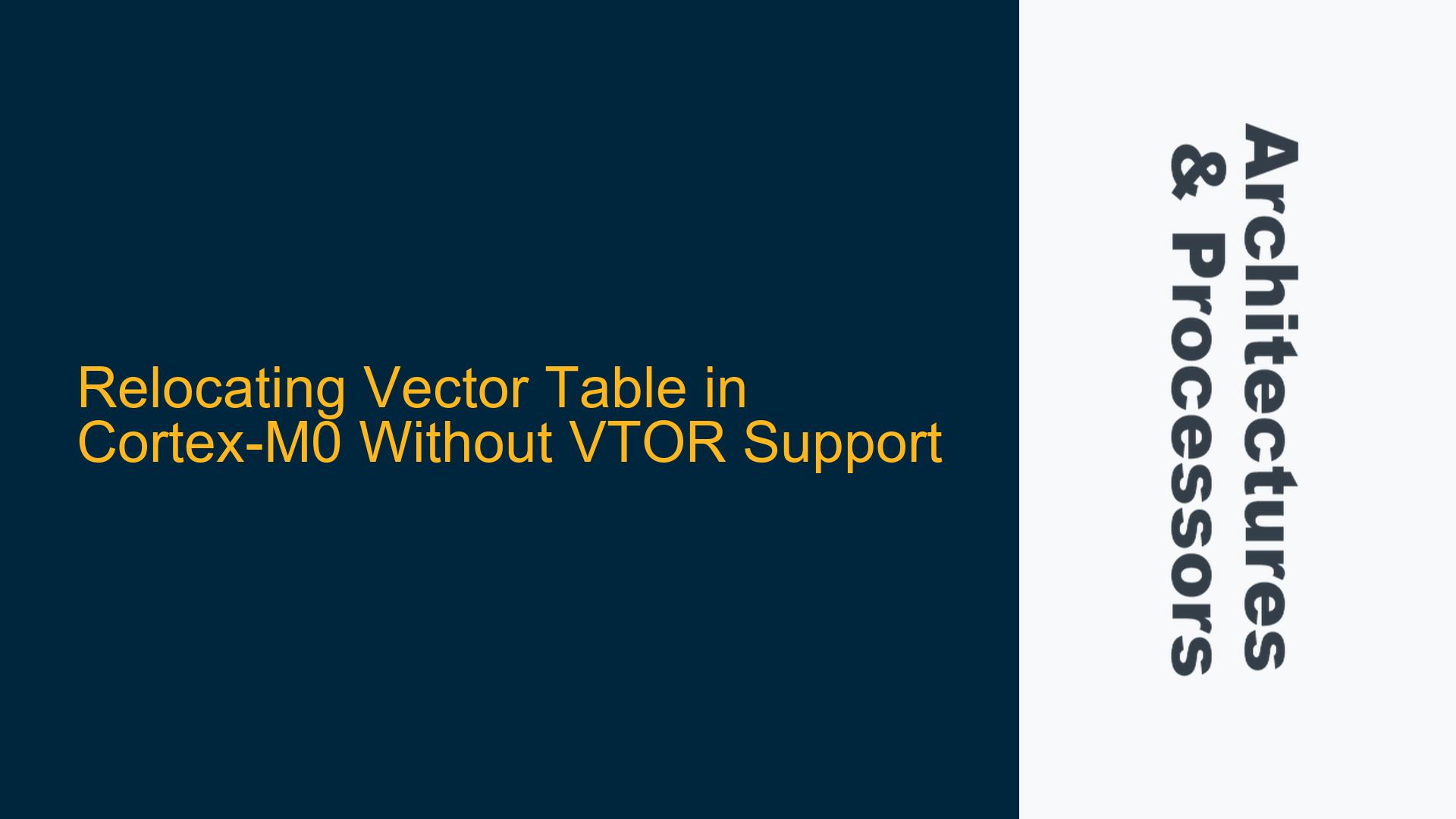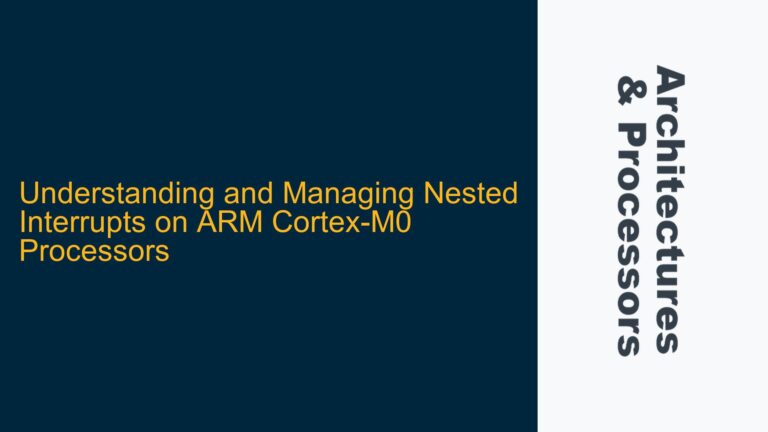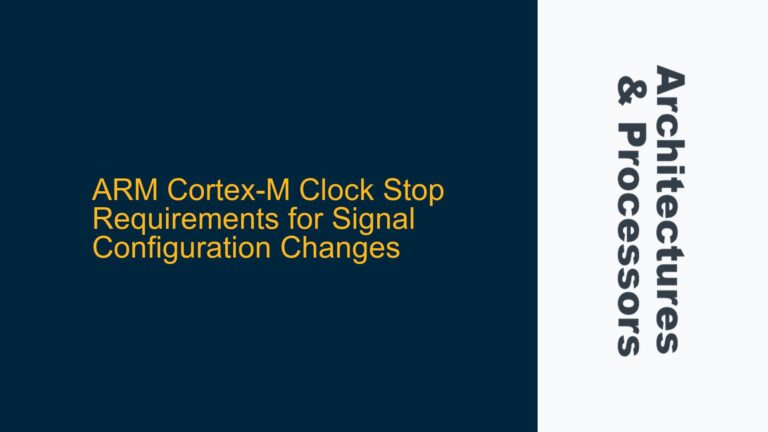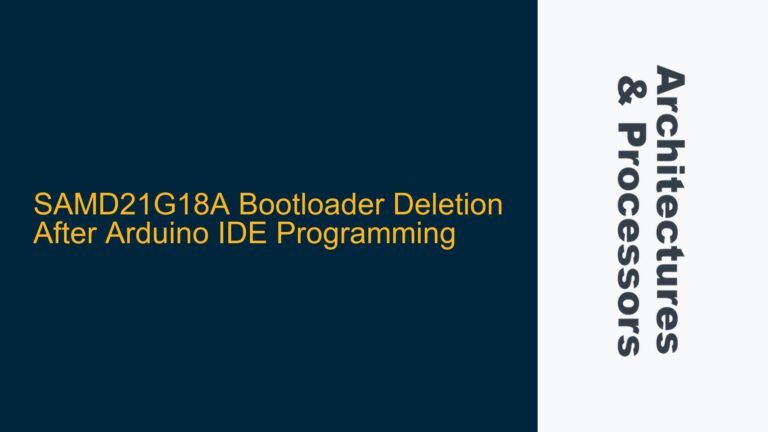Cortex-M0 Vector Table Relocation Challenges in Bootloader-Application Scenarios
The Cortex-M0 processor, being a member of the ARMv6-M architecture, lacks the Vector Table Offset Register (VTOR) present in higher-end Cortex-M processors like the Cortex-M3, M4, and M7. This absence complicates the process of relocating the vector table, which is essential in scenarios where a bootloader and application firmware coexist. The vector table, located at the default address 0x00000000 (or 0x8000000 in flash memory), contains the initial stack pointer value and the addresses of exception and interrupt handlers. When executing an application from a non-default address, the processor must still access the correct vector table to handle interrupts and exceptions. Without VTOR, the Cortex-M0 cannot dynamically remap the vector table to a new location, leading to system failures when interrupts occur after jumping to the application code.
The core issue arises when the bootloader transfers control to the application code, but the vector table remains at the default location. Upon an interrupt, the processor fetches the handler address from the default vector table, which may point to incorrect or invalid locations, causing the system to halt or behave unpredictably. This problem is particularly prevalent in devices like the STM32F030RC microcontroller, where the application firmware resides at a non-default flash address, and the bootloader must ensure seamless interrupt handling.
Memory Remapping and Manual Vector Table Relocation Techniques
The absence of VTOR in Cortex-M0 necessitates alternative approaches to vector table relocation. Two primary methods are available: hardware-based memory remapping and software-based manual relocation. Hardware-based remapping leverages microcontroller-specific features to redirect accesses from the default vector table address (0x00000000) to a new location. For instance, the STM32F030RC microcontroller provides the SYSCFG configuration register (SYSCFG_CFGR1), which allows remapping the memory region at 0x00000000 to either the main flash, system flash, or embedded SRAM. By configuring the MEM_MODE bits in this register, the vector table can be effectively relocated to the desired memory region.
In contrast, software-based manual relocation involves creating a secondary vector table in the application firmware and ensuring that the processor fetches the correct handler addresses during interrupts. This method typically requires modifying the startup code to copy the vector table from the application’s flash location to a fixed RAM address. The interrupt handlers in the RAM-based vector table then redirect execution to the actual handlers in the application firmware. While this approach is more complex and incurs additional runtime overhead, it provides flexibility in systems where hardware remapping is unavailable or insufficient.
Implementing SYSCFG Remapping and RAM-Based Vector Table Management
To resolve the vector table relocation issue in Cortex-M0 devices like the STM32F030RC, a combination of hardware remapping and software techniques can be employed. The first step is to configure the SYSCFG_CFGR1 register to remap the vector table to the appropriate memory region. For example, if the application firmware is located at a non-default flash address, the MEM_MODE bits should be set to map the main flash memory to 0x00000000. This ensures that the processor accesses the correct vector table during interrupt handling.
If hardware remapping is not feasible or insufficient, a RAM-based vector table can be implemented. This involves the following steps:
-
Copying the Vector Table to RAM: During application initialization, the vector table from the application’s flash location is copied to a fixed address in RAM. This address must be aligned to the vector table size, typically 128 bytes for Cortex-M0.
-
Redirecting Interrupt Handlers: The RAM-based vector table contains pointers to the actual interrupt handlers in the application firmware. These handlers are defined in the application code and must be linked to the correct addresses.
-
Updating the Vector Table Pointer: Although Cortex-M0 lacks VTOR, the processor always fetches the vector table from 0x00000000. By ensuring that the RAM-based vector table is located at this address, the processor will use the correct handler addresses during interrupts.
-
Handling Exceptions and Interrupts: The application code must ensure that all exceptions and interrupts are properly configured and enabled. This includes setting up the NVIC (Nested Vectored Interrupt Controller) and ensuring that the stack pointer is correctly initialized.
The following table summarizes the key steps and considerations for implementing vector table relocation in Cortex-M0:
| Step | Description | Considerations |
|---|---|---|
| 1 | Configure SYSCFG_CFGR1 for memory remapping | Verify MEM_MODE bits and boot configuration |
| 2 | Copy vector table to RAM | Ensure alignment and correct handler addresses |
| 3 | Redirect interrupt handlers | Link application handlers to RAM-based table |
| 4 | Update vector table pointer | Ensure RAM-based table is at 0x00000000 |
| 5 | Configure NVIC and exceptions | Enable interrupts and set stack pointer |
By following these steps, developers can successfully relocate the vector table in Cortex-M0-based systems, ensuring reliable interrupt handling in bootloader-application scenarios. This approach combines hardware and software techniques to overcome the limitations of the Cortex-M0 architecture, providing a robust solution for embedded systems with complex firmware requirements.






